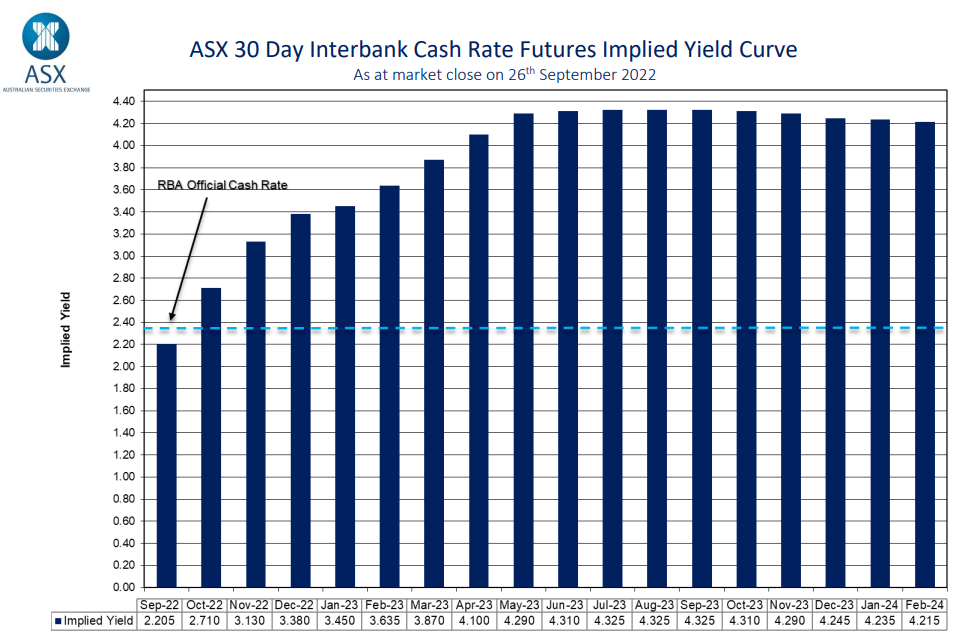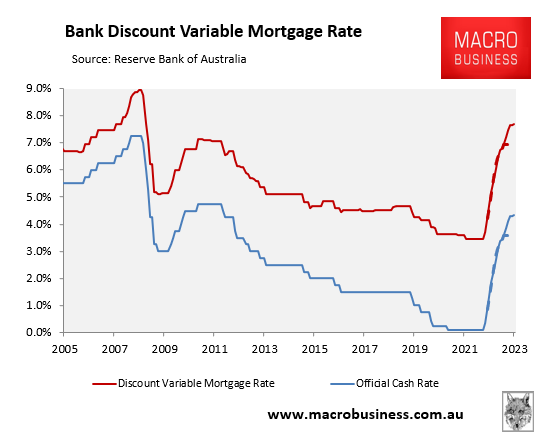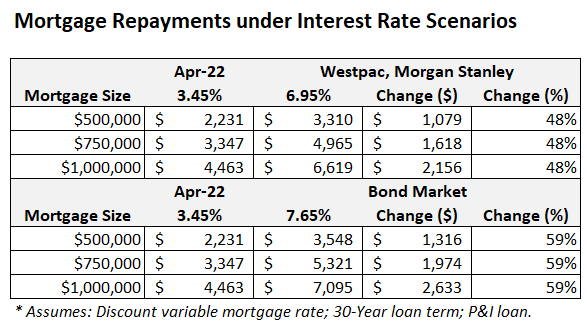The past fortnight has seen analysts lift their forecast peak in Australia’s official cash rate (OCR) in the wake of the aggressive monetary actions of the US Federal Reserve.
Last week, Westpac chief economist Bill Evans raised the bank’s forecast for the terminal OCR from 3.35% to 3.6% by February 2023.
Westpac was yesterday joined by Morgan Stanley, which also lifted its peak forecast for the OCR to 3.6% by February because global interest rates are expected to keep rising:
“With expectations for global rates moving higher, we think a further shift towards inflation management is likely”, Morgan Stanley’s Chris Read said.
Morgan Stanley also tipped a per capita recession for Australia – i.e. two consecutive quarters of per capita GDP contraction – on the back of a 20% peak-to-trough fall in national house prices and reduced household consumption.
The bond market has gotten even more hawkish, once again lifting its OCR peak to 4.3% by May 2023, up from 4.15% on Friday:

Bond market lifts OCR forecast yet again.
The impact of Westpac’s and Morgan Stanley’s OCR forecast are shown in the dashed lines below. They would see Australia’s average discount variable mortgage rate soar to 6.95%, which is more than double its level in April (3.45%) immediately before the RBA’s first rate hike. The bond market’s OCR forecast (solid lines below) would see the discount variable mortgage rate soar to 7.65%.

Double mortgage rates coming.
Westpac’s and Morgan Stanley’s forecast would drive variable mortgage rates to their highest level since October 2011, whereas the bond market’s forecast would be the highest mortgage rate since October 2008.
The impact on mortgage holders would be devastating under either scenario, as illustrated in the next table:

Massive pain incoming for mortgage holders.
Westpac’s and Mortgage Stanley’s forecast would see average mortgage repayments rise 48% above their April 2022 pre-tightening level, adding around $1,080 a month in repayments to a $500,000 variable rate mortgage.
The bond market’s forecast would see average mortgage repayments soar by 59%, adding around $1,316 in monthly repayments to a $500,000 variable rate mortgage.
It is hard to see how either scenario could come to fruition without inflicting massive pain on mortgaged households, crashing house prices and the economy.
Hopefully commonsense prevails and the RBA instead stops well short of these OCR forecasts. Otherwise, the economy will be plunged into a deep and unnecessarily painful recession.

